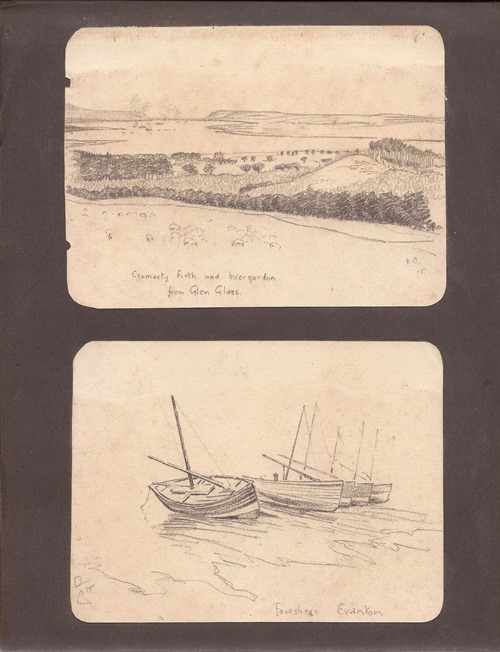A SOLDIER’S DIARY OF THE GREAT WAR
Published anonymously, but by Douglas H. Bell
With an Introduction by Henry Williamson
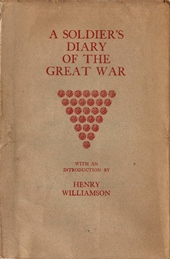 |
|
|
First edition, Faber & Gwyer, 1929 |
|
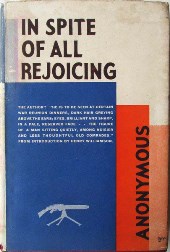 |
|
|
First US edition, Duffield & Co., 1930 |
Douglas Bell, artist: sketches and watercolours
Faber & Gwyer, 1929, 7s 6d net
Douglas Bell’s inscription to HW is dated ‘Easter 1929’. Easter in 1929 was over the weekend 29 March – 1 April, and so publication would have been about then. HW’s ‘Introduction’ is dated ’28 December, 1928’.
Duffield & Company, New York, 1930
In Ian Waveney Girvan’s A Bibliography and A Critical Study of the Works of Henry Williamson (Alcuin Press, 1931, Limited Edition, 420 copies), this book is described thus:
It was revised and annotated by Henry Williamson and his share in the collaboration was so considerable that it . . . should be considered as a Williamson item.
That is being somewhat unfair to Captain Douglas Bell, MC, whose story is told in the book through his own diary entries. HW certainly helped in preparing and editing Bell’s manuscript for publication, and sent it off to his friend Richard de la Mare, then at Faber & Gwyer, with his personal recommendation; and indeed, he wrote a substantial fourteen-page introduction for the book; but to claim it as 'a Williamson item’ is being perhaps a little perverse.
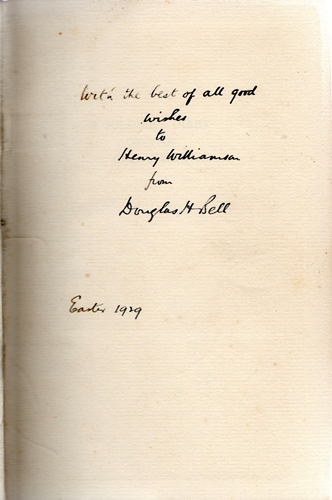
Douglas Herbert Bell had been a fellow pupil of Colfe’s Grammar School although somewhat senior to HW, having been born in 1890, and their paths would not have crossed there. After leaving school Bell went on to Christ’s College Cambridge, and was shortly employed in the Hong Kong and Shanghai Bank. At the time the First World War broke out he was already enlisted in the London Rifle Brigade as a Territorial soldier (as was HW), and went out to France on 4 November 1914 on the troopship Chyebassa – as did HW. They parted company when HW was invalided back to England with severe gastroenteritis and trench feet in January 1915.
Commissioned in the field in March 1915, Bell undertook officer training in France, and was then posted to the 2nd Battalion, Queen’s Own Cameron Highlanders, which was in the line in the Ypres Salient. Wounded in the leg at Hill 60, just south of Zillebeke, Bell was invalided back to Blighty on 27 April ('Good old Dover!'). Following a period of leave, Bell was briefly with the 3rd (Reserve) Battalion, Queen’s Own Cameron Highlanders, stationed at Invergordon on the Cromarty Firth, Scotland, before transferring to the 1st Battalion on the Western Front; he was wounded at Lone Tree during the Battle of Loos in September/October 1915. Bell's convalescence was spent at Torquay, South Devon; these various postings are reflected in his album of sketches, reproduced below. On 5 January 1916 he married Norah, 'a glad day'. By May Bell was back in France, where he took part in the Somme battles. In August 1916 Bell transferred again, joining the RFC. In his Diary he explains why:
August 13th. During June [1916], before leaving the mining area, a notice had come round asking young officers to volunteer for the R.F.C. in view of the great contemplated expansion of this branch [the appalling casualty rate among pilots clearly not being mentioned]; and I was so sick of trenches (and trench mortars) that I had sent in my name, on the principle of anything for a change.
On 10 November Bell was awarded his 'wings' and became a qualified pilot; not long afterwards he joined a squadron at Savy, sixteen kilometres north-west of Arras. Bell does not identify the squadron, but it would have been either No. 5 Squadron or No. 13 Squadron, both of which were based at Savy during the Battle of Arras in April 1917 and both equipped with the obsolete 2-seater BE2e aircraft that Bell describes. They were slow and cumbersome machines, but ideal for reconnaissance duties and in particular artillery observation – the observer watching for the fall of shells and using a primitive wireless set to call corrections to the gun batteries. It was a dangerous occupation, for it required steady flying, which left the aircraft vulnerable to anti-aircraft fire ('Archie') and to attacks by far superior enemy aircraft.
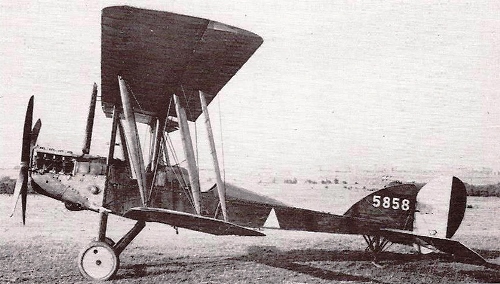 |
|
BE2e Designed by Geoffrey de Havilland in 1911, the BE (Blériot Experimental) series of aeroplanes were built by the Royal Aircraft Factory at Farnborough. The BE2e was developed in early 1916. Powered by a 150 hp Hispano-Suiza engine, its maximum speed at 6,500 feet was 75 mph, taking nearly 24 minutes to reach that altitude. By April 1917 it was completely outclassed by fast and well-armed German fighters such as the Albatross, and in that month alone the RFC lost no fewer than 60 BE2s of various marks. |
In May 1917 Bell broke his collar-bone in an accident when taking off, following which he was returned to England: 'I was sent home for a long rest, and in November 1917 resumed flying at [Worthy Down, near] Winchester, as instructor to observers. There I remained until the end of the war.' The final entry in his Diary reads:
November 11th, 1918: Thank God the end of the awful blind waste and brutality of war has come, and let us pray it may never return. Man prays to God, because he instinctively feels there is a Power outside himself, yet the answer to such prayer depends on man himself. After this lesson, is man too little-minded and forgetful to banish the things that cause war?
I am feeling rather ill and depressed, in spite of all the rejoicing around me; immeasurably relieved, glad to be alive, and glad we have won, but tired and a little sad.
In Colfe’s Grammar School and the Great War 1914-19, edited by Leland L. Duncan (Printed for the Governors, The Worshipful Company of Leathersellers, 1920), Bell’s entry in the Roll of Service reads:
BELL, Douglas Herbert (1900-3). Joined 2.4.08. Lance-Cpl., London Rifle Brigade; Lieut., 1st Battn. Queen’s Own Cameron Highlanders. Temp. Captain, R.A.F. Served in France. Thrice wounded.
He was awarded the Military Cross ‘for distinguished service in the field.’ – London Gazette, 3.6.16
Bell resigned his commission in 1920, taking up an appointment in Mincing Lane (the London home of the wholesale trade in tea, etc.) but developed sleeping sickness and became unfit for work; he then decided to turn his hand to writing.
HW and Bell met up again at a Chyebassa re-union dinner in November 1926, and later Bell asked for help with his book of his war service. (The London Rifle Brigade had embarked on the SS Chyebassa, a ship formerly belonging to the British India Steam Navigation Company, on 4 November 1914, landing at Le Havre the next morning. Post-war London Rifle Brigade re-unionsof 'the originals' were named after the ship that took the battalion to war. See The 'Chyebassa' re-union dinners.)
HW’s ‘Introduction’ can perhaps seem a trifle condescending at times, though presumably Bell was happy with it. For instance he states:
To many these pages will appear entirely true; to almost as many they will be typical of the War . . . [but] . . .
But for HW the diary was all too brief and prosaic: for him, Bell had not captured the essence of the war. HW gives his own (brief yet powerful) description of what life in the trenches was really like – as opposed to Bell’s view that ‘it was a picnic’. He was of course awaiting the publication of his own imminent first venture into that war-writing zone (The Wet Flanders Plain). Bell’s book, although perhaps a little simplistic in its approach, is today considered one of those giving real detail of the war and well worth reading.
A Soldier's Diary of the Great War was published in the United States in 1930 by Duffield & Company as In Spite of All Rejoicing: A Soldier's Diary of the Great War, again anonymously. The copy that Bell gave to HW is inscribed:
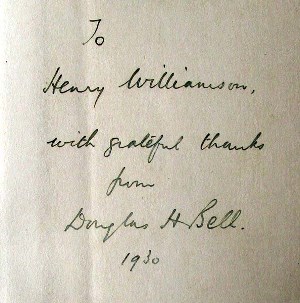
HW portrays Bell, first as a rifleman and then as lance-corporal and corporal, as ‘Douglas’, in How Dear is Life and A Fox Under My Cloak (vols 4 and 5 of the Chronicle of Ancient Sunlight series), and indeed dedicates that latter volume to him.
Bell subsequently wrote seven historical books chiefly on naval subjects, including Elizabethan Seamen (Longmans, 1936) and Seamen of Britain (Thomas Nelson, 1943). The first title is in HW’s archive, together with Drake was My Captain (Frederick Warne, [1952]), a story for boys:
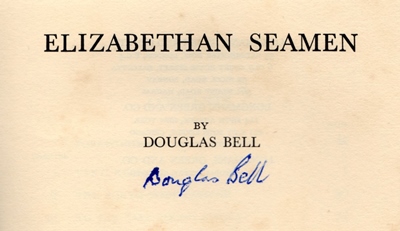

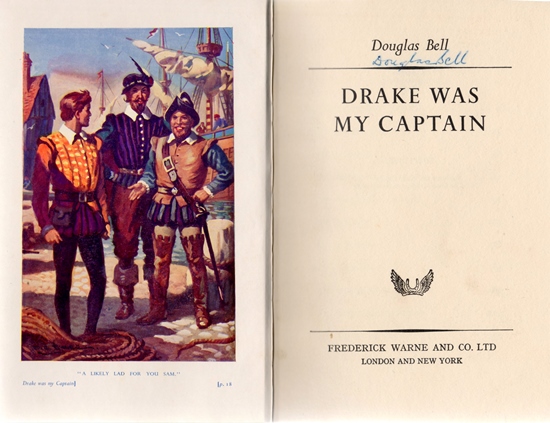
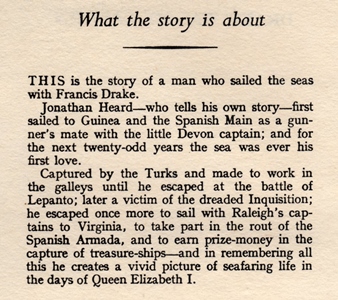
Douglas Bell died on 17 September 1964; he had been suffering from Parkinson's Disease for a number of years, and in 1960 had been seriously injured when hit by a car while out walking, an accident from which he never really recovered. HW’s diary entry for 21 September 1964 records:
Attended funeral of Douglas Bell, Old Colfeian, . . .
HW’s ‘Introduction’ to A Soldier's Diary of the Great War is reprinted in Threnos for T. E. Lawrence, and other writings, compiled and edited by John Gregory, HWS, 1994; e-book 2014.
*************************
There are just two reviews in the Literary Archive, the second only being discovered amongst other papers in late 2020; this perceptive review is particularly interesting as it is by Jack Squire, editor of the monthly literary magazine The London Mercury:
The Times, 11 April 1929:
The first notable volume describing personal adventures of the late War . . . since Mr. Blunden’s Undertones of War [but not so good]. It is however a fine and vivid narrative, bearing the signs of truth and the impress of a frank and gallant spirit. [There follows a résumé of the text.]
Mr. Henry Williamson lends the author his distinguished name to set upon his title-page; but though his introduction is in some respects a striking piece of writing, it cannot be said that it does him any other service. Evidently he feels that the stuff of the diary is not strong enough and does not sufficiently illustrate the horrors of war. In this spirit he proceeds to rewrite the Ploegsteert scene, making of its dirty peacefulness something so ghastly that it would almost serve for the Salient . . .
Mr. Williamson is entitled to his own opinions, but he seems to have chosen an unhappy occasion to voice them here, on the pages of a man who writes, after being twice wounded . . .
The Observer (J. C. Squire), 19 May 1929:

*************************
The dust wrapper of A Soldier's Diary of the Great War:
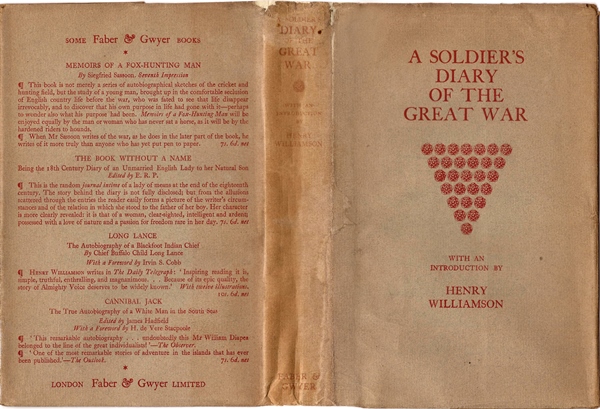
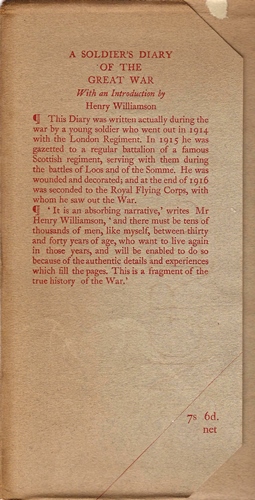
The front of the dustwrapper for the US edition:
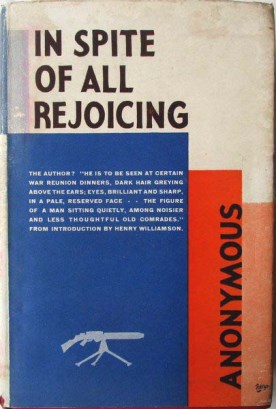
*************************
Douglas Bell, artist: sketches and watercolours:
Douglas Herbert Bell was a keen amateur artist, and in HW’s archive there is this charming sketch, drawn in 1914 and later given to HW, of Keston Ponds:

In 2017 an album of Bell's sketches was donated to the Society by Peter Lazare, who wrote in his accompanying letter:
My connection with Douglas Bell is that we were neighbours from the time that my family moved to Crowcombe Heathfield in 1953, when I was three years old. He would have been about 60 then and struggling with Parkinson's, and so he seemed remote to me, though kindly. Later in childhood I loved making models of sailing ships (schooners and at least one clipper) and I remember DH coming to attend the launch ceremonies at our garden pond.
The sketches date from the First World War, many of them being drawn in pencil on a sketch pad during the short time he was in Scotland with the 3rd (Reserve) Battalion, Queen’s Own Cameron Highlanders, in 1915. A few, of a slightly later date, are of the area around Torquay, sketched while he was convalescing there after being wounded at Lone Tree. Bell had experienced – and shortly would again – some fierce fighting in the trenches, and surely found consolation and some peace of mind sitting in the solitude of the countryside with his sketch pad. The sketches, with some water colours, have been pasted in the album, which is reproduced here in its entirety (it measures 11 x 8½ inches). Bell's pencilled captions are given below each page.
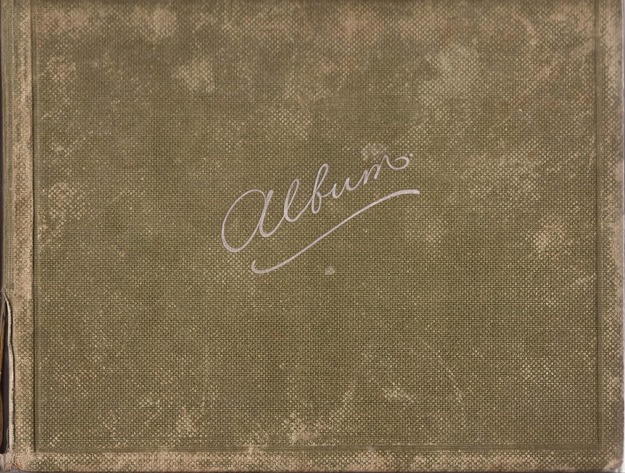
|
|
|
Upper: 'Cromarty Firth and Invergordon from Glen Glass' DB,15 Lower: 'Foreshore, Evanton' DB,15 |
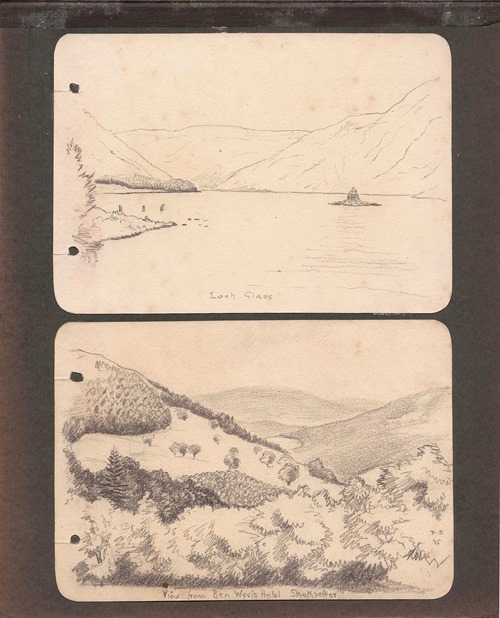 |
|
Upper: 'Loch Glass' DB,15 Lower: 'View from Ben Wyvis Hotel, Strathpeffer' DB, '15 |
|
|
|
Upper: 'Ben Wyvis and Fyrish' DB,15 Lower: 'Glen Glass' DB,15 |
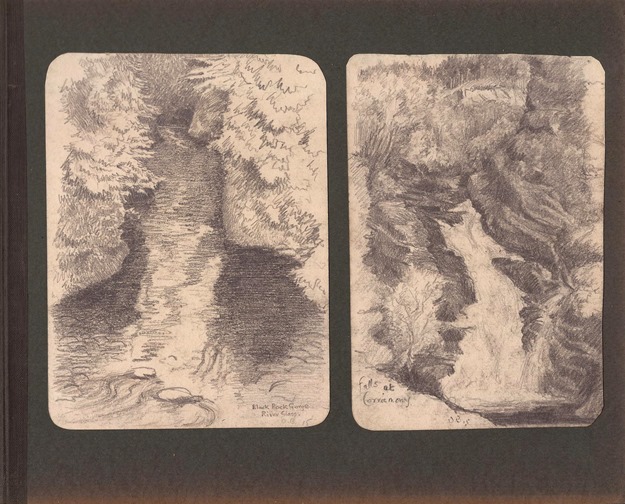 |
|
Left: 'Black Rock Gorge, River Glass' DB,15 Right: 'Falls at Corriemony' DB,15 |
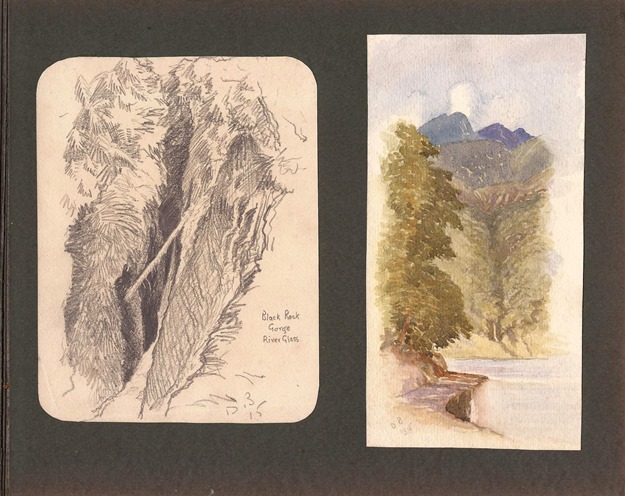 |
|
Left: 'Black Rock Gorge, River Glass' DB,15 Right: uncaptioned DB 1915 |
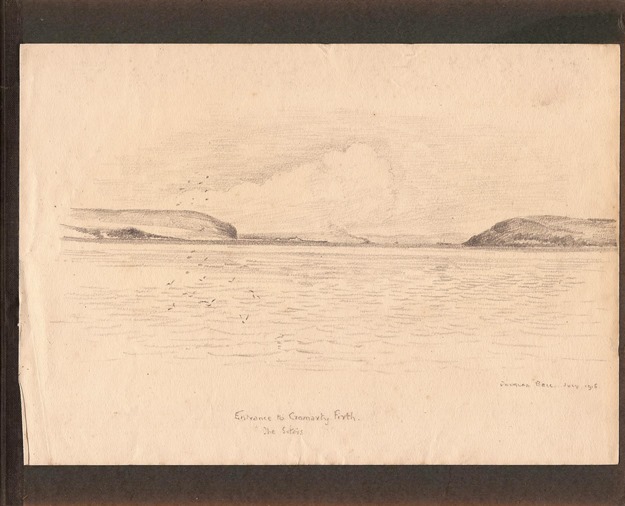 |
|
'Entrance to Cromarty Firth, The Sutors' Douglas Bell, July 1915 [The Sutors are the opposing headlands at the entrance] |
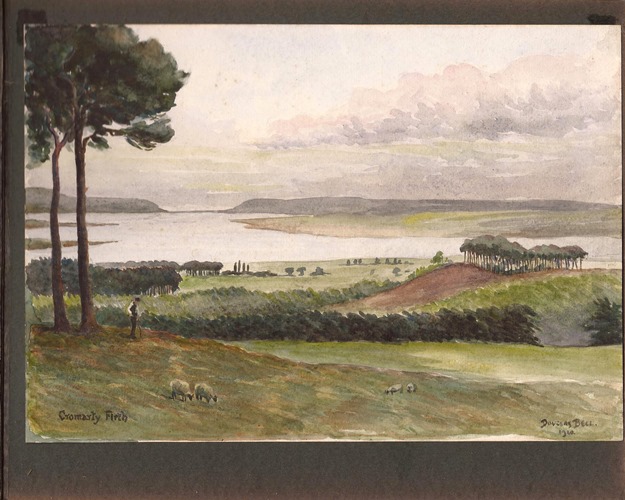 |
|
'Cromarty Firth' Douglas Bell, 1915 [though the date looks like 1910] |
 |
| 'Cromarty Firth' DB, 191? [illegible] |
 |
| 'Milton Bridge, Ross-shire' DB, 1915 |
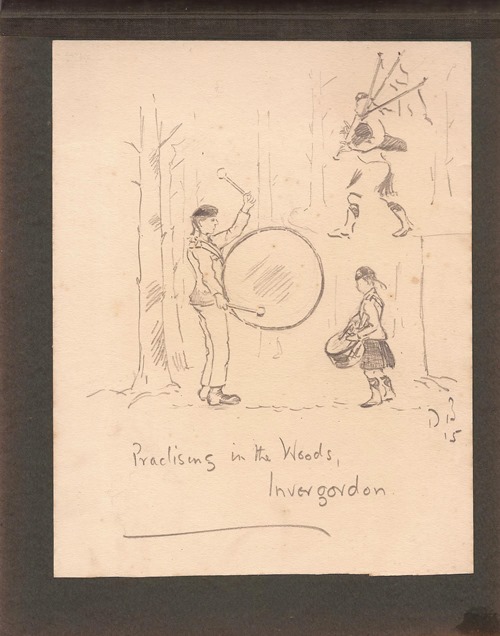 |
| 'Practising in the Woods, Invergordon' DB, 15 |
 |
| 'Kildary Parish Church, Ross-shire' Douglas Bell, 1915 |
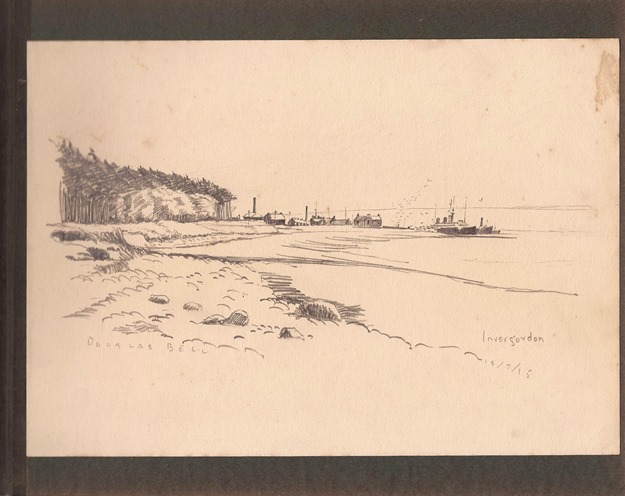 |
| 'Invergordon' Douglas Bell, 18/7/15 |
 |
|
|
'1st London General Hospital Captain McIver, Royal Sussex 16 Nov. 1915' |
Douglas Bell delineavit Cameron Highlanders
|
 |
|
|
'Lieut. Brooks 8th Queens' |
Douglas Bell delineavit 18/11/15 1st Cameron Highlanders |
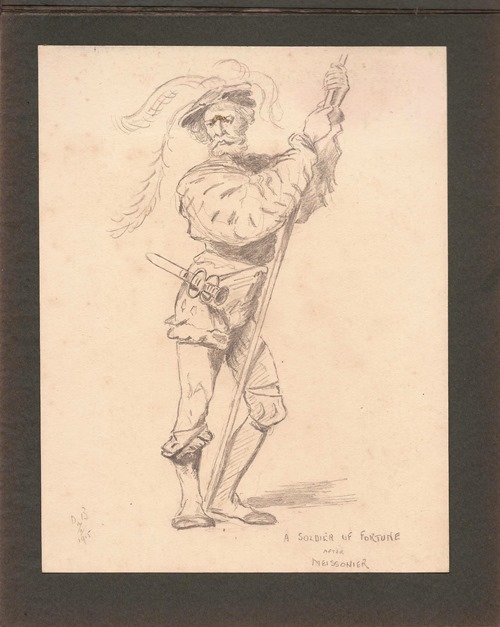 |
| 'A Soldier of Fortune, after Meisonier' DB, 16/11/1915 |
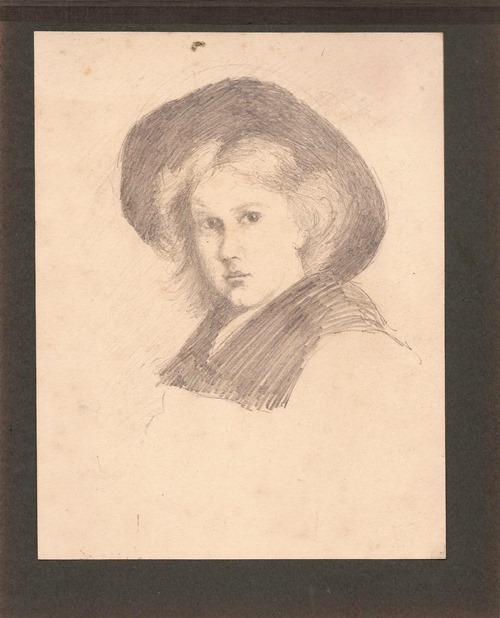 |
| Uncaptioned, unsigned |
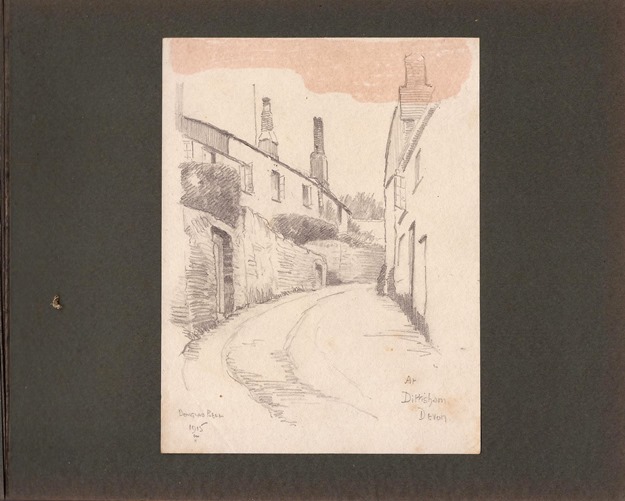 |
| 'At Dittisham, Devon' Douglas Bell, 11 Dec. 1915 |
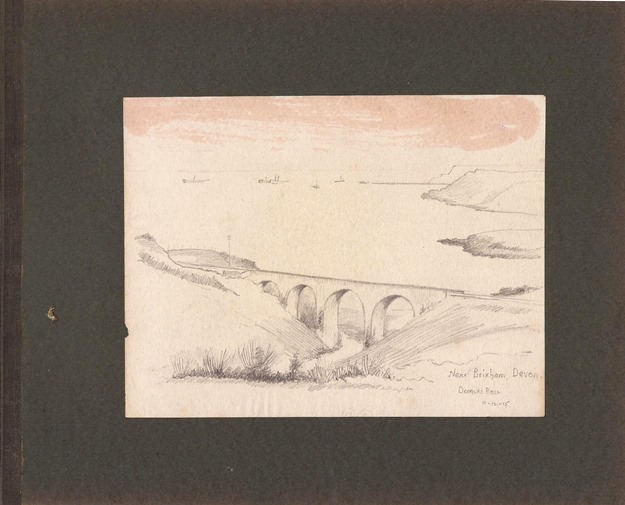 |
| 'Near Brixham, Devon' Douglas Bell, 11-12-15 |
 |
| 'Cliffs at Daddy Hole, Torquay' Douglas Bell, 12/12/15 |
 |
| 'Chapel Hill, Torquay' Douglas Bell, 13-12-15 |
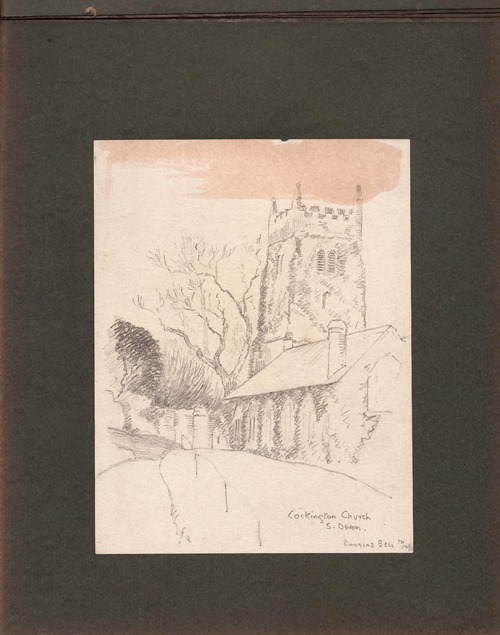 |
| 'Cockington Church, S. Devon' Douglas Bell, 12/12/15 |
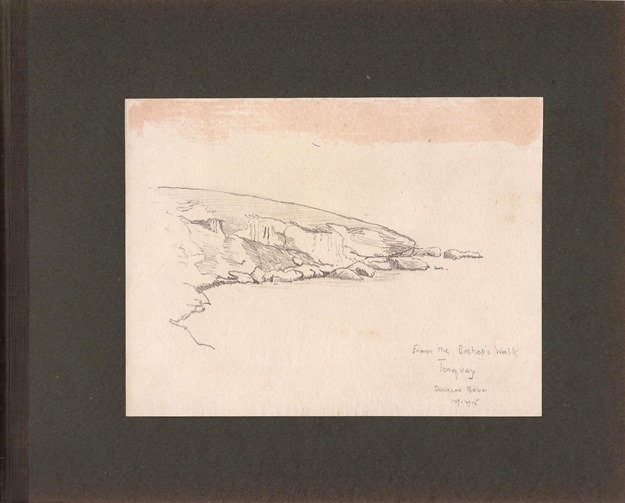 |
| 'From the Bishop's Walk, Torquay' Douglas Bell, 12/12/15 |
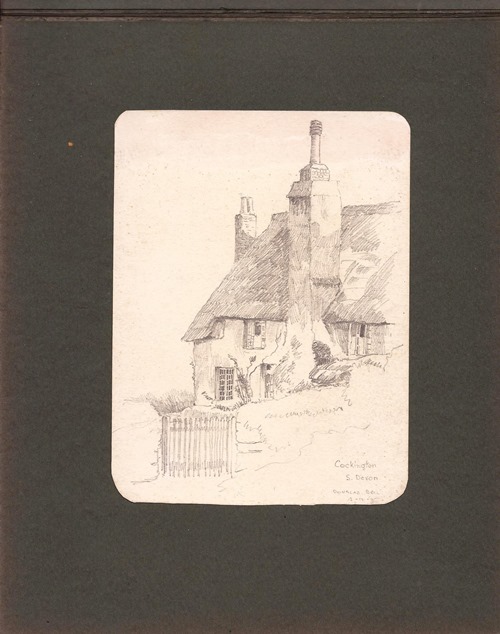 |
| 'Cockington, S. Devon' Douglas Bell, 13-12-15 |
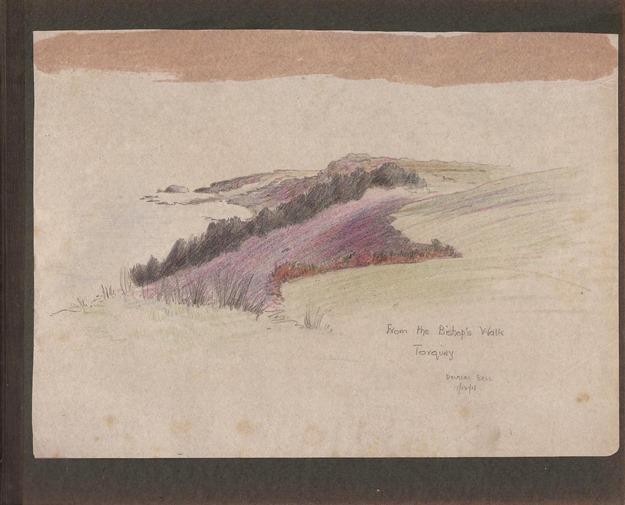 |
| 'From the Bishop's Walk, Torquay' Douglas Bell, 17/12/15 |
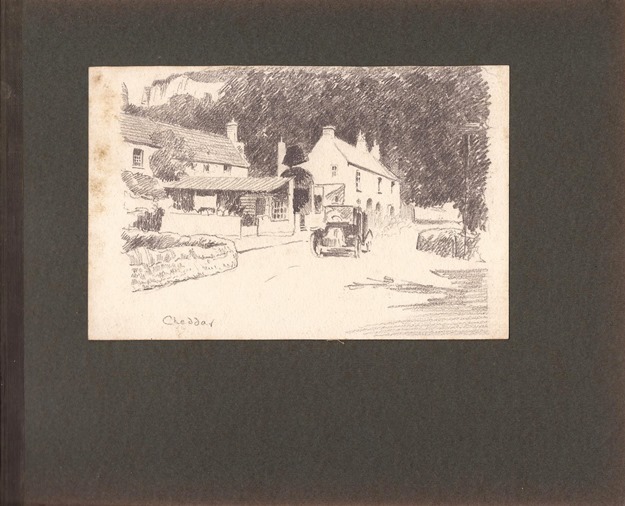 |
| 'Cheddar' Unsigned, undated |
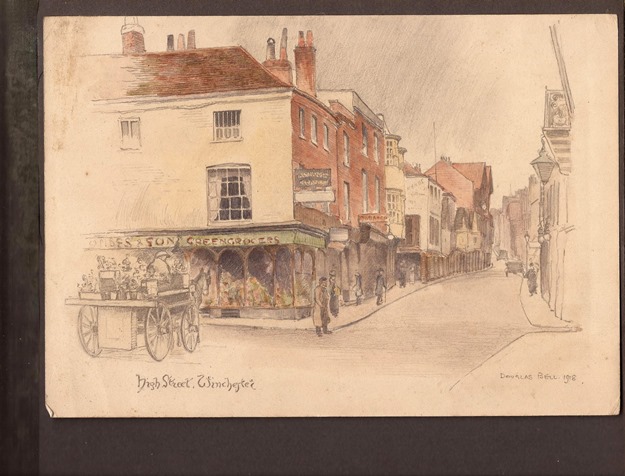 |
| 'High Street, Winchester' Douglas Bell, 1918 |
Loosely inserted in the album is this single sheet; unsigned and undated, it is presumed that the pen-and-ink drawing and the poem are by Douglas Bell:
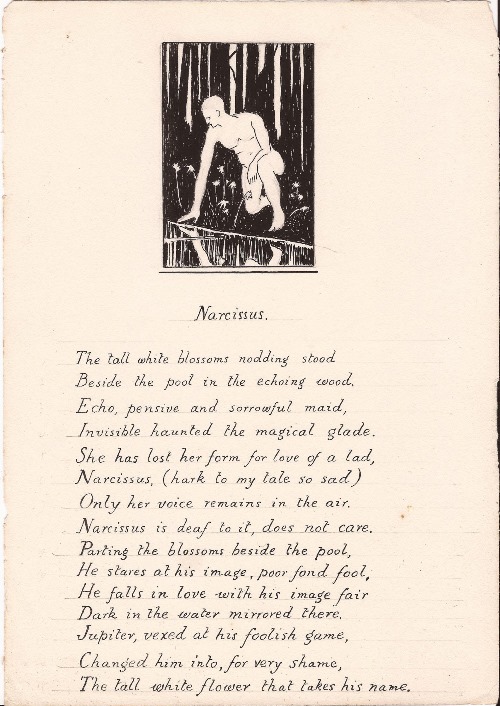
*************************

